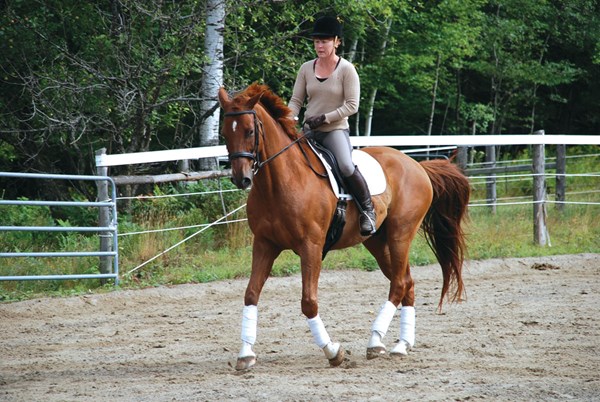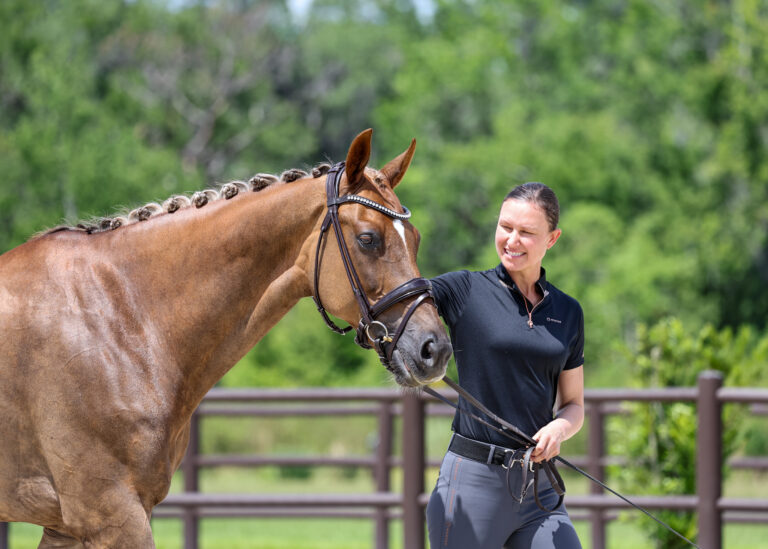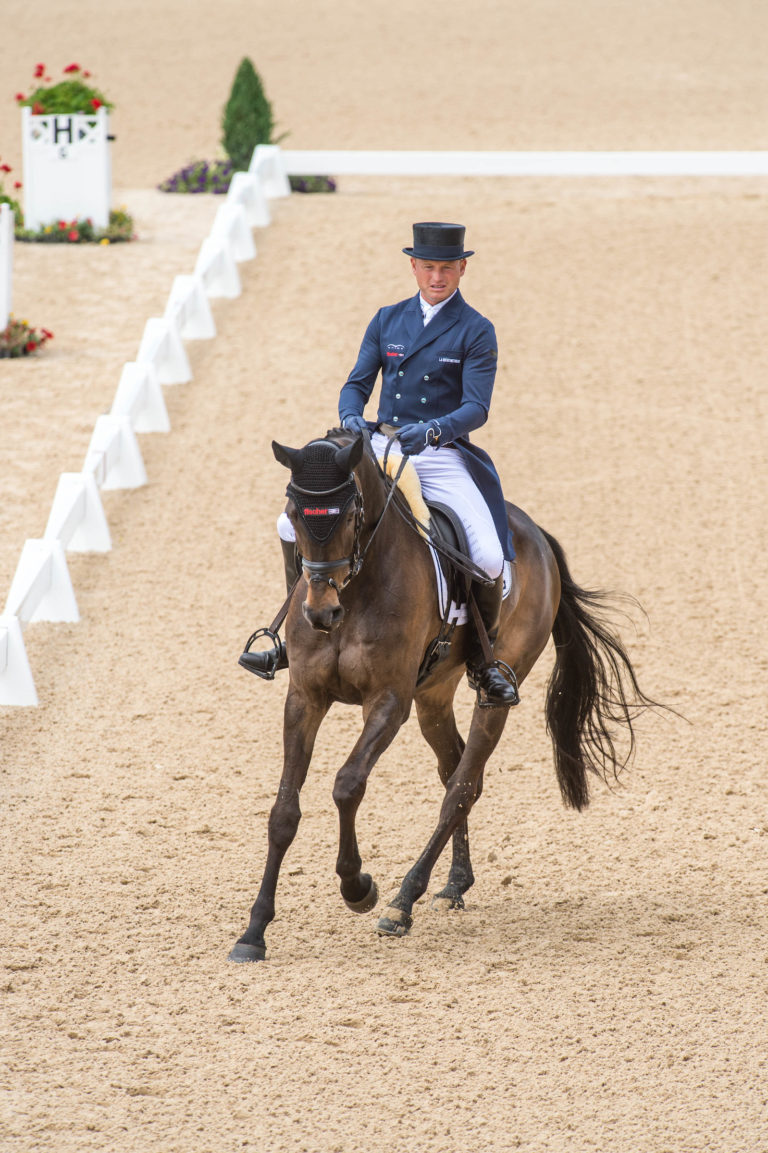
This is Karen Lenaghan-Parfitt with her 15-year-old Hanoverian gelding, Wally (p. 30). He has been in training for only four years because of blindness so he has come a long way in a relatively short time. He is training and getting ready to start Third Level. Karen did not describe what her main training issues are so I’ll just point out some things from the photo to hopefully help her prepare for her upcoming competitions.
This photo is of the first beat of a left-lead canter stride—that is, the right hind landing on the ground, the left hind and right fore in a diagonal pair landing next, and then the left fore landing after that. Karen’s horse is going in a way that, when the diagonal pair of legs lands, the front hoof will touch the ground before the hind will. Ideally, they should touch at the exact same time for a good-quality canter. Her horse also isn’t sitting on his hindquarters or lifting his wither quite enough, which is part of the problem.
It’s a challenge to diagnose problems thoroughly from one single frame in time, but what I see in Karen’s body gives me some clues as to how to fix what might be a chronic problem between the two of them.
Although I just mentioned a longitudinal balance issue (back to front) in that her horse isn’t sitting enough, we must address the lateral balance (side to side) in this photo as well. Karen’s body is not lined up equally on both sides— her left rein being used as an indirect rein is a big indicator of that. I don’t use indirect rein aids for the very reason that I see in this photo. An indirect rein is a rein that is pushed inward toward the horse’s wither when the rider closes her hand, and it’s most commonly used on the inside side. (The “inside side” is the left side if you’re tracking left and the right side if you’re tracking right.) Her horse’s right shoulder and long back muscle have dropped off and down to the right, the left shoulder and back muscle are up—but too up and too narrow—and his head is tilting (with his poll right and his nose left) because the left rein contact is indirect. It may be that this position in her horse has pushed her body into an uneven place or that her body becoming uneven has pushed him off balance.
My guess is that Karen’s horse may push himself out of balance and into the left side of his body and that Karen is reacting by moving the left side of her body and rein into him in order to move him away from her to the right. This is a common approach, but I find it much more effective not only to keep the inside rein direct but also to think about the line-up of your body when having this issue. Karen’s left hand is pushed to the right along with the whole left side of her body, making her somewhat contorted. Her left seat bone doesn’t have as much contact with the saddle as her right one and it’s much closer to her horse’s spine. Therefore, the left side of her body is shorter than her right. Her left foot is pushing him a lot to try to help in getting him to move away and to the right.
Karen will benefit from spending some time in walk, finding her seat bones and assessing if they are equal distance from her horse’s spine to start with. Then she needs to stack her upper body straight on top of that even placement of her seat bones. This will probably require the assistance of someone to act as her eyes on the ground. Then Karen should try to keep her hands holding the reins at an equal distance from the wither, even if she’s turning or if her horse is trying to go out of lateral balance. She should think about moving him into the center of her rather than moving her body to compensate for his wrongness. If she agrees to contort her body when he contorts his, it becomes hard to know where home base is and who determines it.
If Karen addresses her body in this way, her horse will likely have less of a pattern to lean into his old ways. If it persists, I suggest that Karen think more about using her right side, including her rein, to somehow guide him over to the right side of his body. As Karen does this, she needs to stay laterally balanced in her body and direct with her reins.
It’s a great exercise in walk to simply make an 8-meter figure eight without narrowing in toward your horse with body or hand on either side until it seems equally easy in both directions. It sounds simple, but it is effective.
Once her horse is more laterally balanced, his longitudinal balance will automatically improve because it is easier for him to go uphill if he’s loading his hind legs equally.











